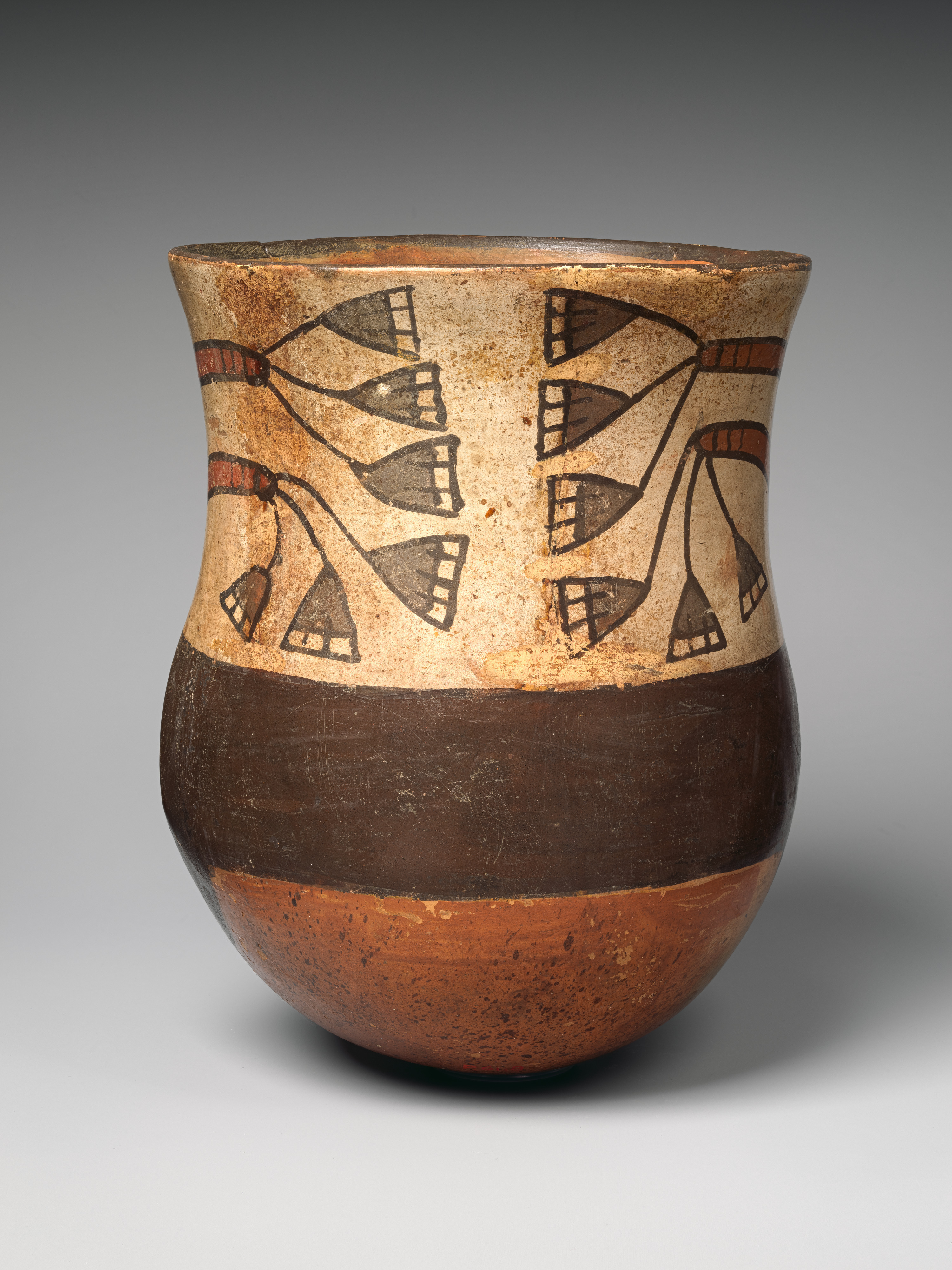Head jar
Not on view
Polychrome pottery such as this head jar was crafted in the surroundings of Cahuachi, the most important ceremonial center on the Peruvian South Coast during the first centuries CE. Used and exchanged in large festivities that congregated participants from close and distant towns, these ceramics were taken home as symbols of prestige and bearers of images with religious meanings. These colorful vessels have been found by archaeologists in all kinds of houses, regardless of the status of their residents. Head jars such as this example, however, were special possessions of only the most affluent families (Vaughn 2005).
With its wide-open eyes and grimacing mouth, this head jar appears to represent a living person. By contrast, severed heads—also known as "trophy heads"—were depicted with either the eyes or the mouth closed with cactus thorns. In certain South American Indigenous traditions, the head is where a person’s soul, experience, and skills reside. Obtaining this body part from an enemy or a relative may have been a way to hold such power for one’s benefit. Head jars could have been representations of their organic counterparts, or they could have been considered "real" heads made from a different substance—ceramic—and thus, with similar properties and potency. At least in one situation, it has been reported that a head jar may have been placed in the grave of a decapitated person as a ceramic replacement for the missing part (Conlee 2007).
The Nasca was a society that thrived in the desert valleys of the South Coast of Peru between 1 and 600 CE when the influence of the highland Wari Empire was felt in the region. The Nasca transformed the desert into a rich agricultural landscape through the implementation of a complex system of reservoirs, wells, and canals. Nasca artists distinguished their work from their Paracas predecessors by applying colorful slips—watery mixtures of clay and pigments—before firing, thereby permanently fixing the color to the ceramic surface. A delicate sheen was achieved by burnishing the surface with a stone polisher or similar implement before firing while the ceramic surface was still relatively moist.
Hugo C. Ikehara-Tsukayama, Senior Research Associate, Arts of the Ancient Americas, 2023
References and Further Reading
Christina A. Conlee. "Decapitation and Rebirth a Headless Burial from Nasca, Peru." Current Anthropology 48, no. 3 (2007): 438-45
Ikehara-Tsukayama Hugo C., Dawn Kriss, and Joanne Pillsbury. "Containing the Divine: Ancient Peruvian Pots." Metropolitan Museum of Art Bulletin vol. 80, no 4 (Spring 2023).
Pardo, Cecilia, and Peter Fux. Nasca. Lima: Museo de Arte Lima, 2017.
Vaughn, Kevin J. "Craft and the Materialization of Chiefly Power in Nasca," in Foundations of Power in the Prehispanic Andes, edited by Kevin J. Vaughn, Dennis Ogburn, and Christina A. Conlee. Archaeological Papers of the American Anthropological Association, No. 14, pp. 113-30. American Anthropological Association, 2005.
Due to rights restrictions, this image cannot be enlarged, viewed at full screen, or downloaded.
This artwork is meant to be viewed from right to left. Scroll left to view more.




